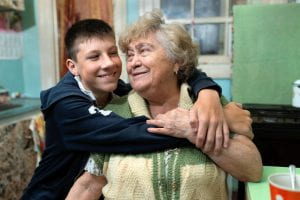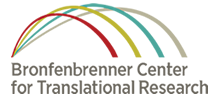 In modern society, most of us live in silos surrounded by people similar to us; this applies across many factors including race and ethnicity, socioeconomic status, and age. In fact, young people and even middle-aged adults today have less contact with older adults than ever before in human history.
In modern society, most of us live in silos surrounded by people similar to us; this applies across many factors including race and ethnicity, socioeconomic status, and age. In fact, young people and even middle-aged adults today have less contact with older adults than ever before in human history.
The age-related divisions in our society have a detrimental effect across generations. A body of evidence demonstrates that older people benefit from relationships with younger generations through improvements in cognitive function, lower anxiety, and increased physical activity, to name a few. Additional evidence shows that young people benefit from these relationships through improved attitudes toward older adults, skill and communication development, and support derived from meaningful relationships.
Karl Pillemer, a professor of Human Development at Cornell and an affiliate of the Bronfenbrenner Center for Translational Research, has seen these benefits first-hand in his own work. He created a program called Building a Community Legacy Together (BCLT), which provides a structure for high school students to conduct interviews with and learn from older people. The idea is to promote wisdom-sharing and relationship-building across generations.
In a study published this year in the International Journal of Environmental Research and Public Health, Pillemer found that his program leads to significant benefits for younger participants.
“It’s like two interlocking pieces in a puzzle: Young people need guidance to navigate their lives and to improve their attitudes toward aging and older people, and older people feel the need for generativity, which is a desire to support younger generations,” Pillemer said. “This program addresses these two problems at once.”
For the study, Pillemer and his team recruited 93 middle and high school youth; 47 participated in the program and 46 were placed in a control group.
Those who participated in the program spent approximately 20 hours exploring their thoughts and feelings about older people and learning social science methods, including how to plan and conduct interviews and how to synthesize and summarize qualitative data. Then, they interviewed older people in their communities, and finally presented what they learned to the group.
Participants in the program reported significant improvements in their comfort and confidence interacting with older people, their attitudes toward older people, their interest in working with older people, and their own purpose in life.
Nearly all the youth participants reported the program was a positive experience. Although researchers did not report outcomes for the older adult participants, they also rated the program highly, Pillemer said.
“It is important to prepare the younger people because, in some ways, this program is about cross-cultural communication,” Pillemer explained. “Just putting older and younger people together without preparing the younger people is unlikely to have benefits. The younger people need to think about some stereotypes they may have and reflect on the value of older people in their lives.”
Empowering older adults is an important aspect of the BCLT program, Pillemer said. “In asking older people for advice, the young people are approaching them with a need,” he said. “That is very different than other programs where the young person is volunteering and the older person is needy. Our program empowers the older participants by putting them in the position of offering useful advice for living, based on their long experience.”
Programs like BCLT that connect older and young people in meaningful ways are essential in our aging society, Pillemer said.
“We are in the midst of a dangerous experiment, in which youth have almost no interactions with older individuals other than their own family members,” he said. “We’re living in a society highly segregated by age, and that leads to stereotypes and misconceptions about aging. As our society ages, having young people develop relationships with older people is critically important. The BCLT program is an example of how this type of integrational approach can be rigorously tested and shown to be effective.”
The take-home message: Find ways to interact with the older adults in your community; check in with a local senior center to see if you can visit regularly or deliver a meal to an older neighbor. While you’re at it, don’t forget that your older companion likely has useful advice to share based on a lifetime of experience.


